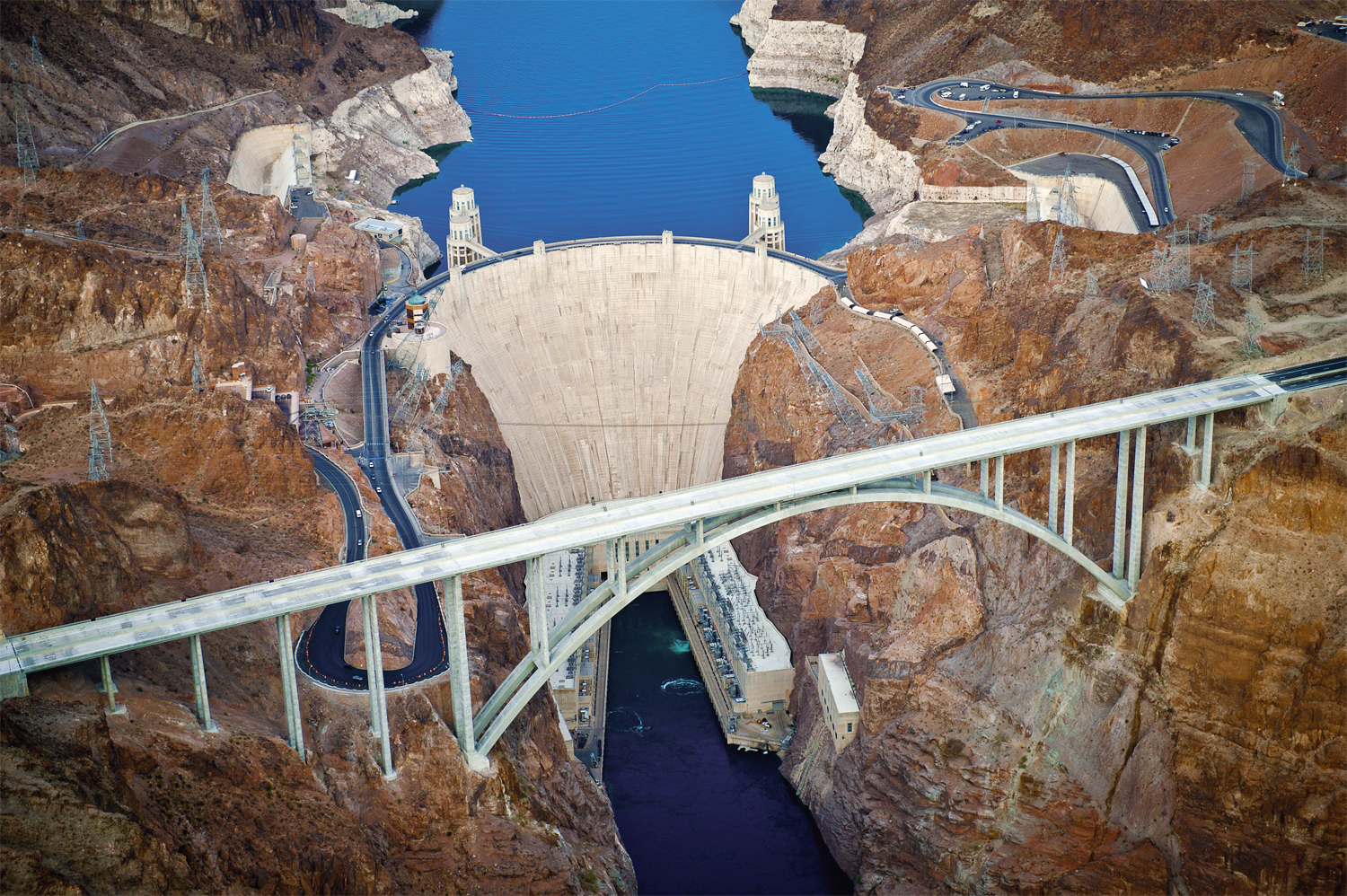Mass concrete

|
[edit] Introduction
The generally accepted and widely-used definition of ‘mass concrete’ is that provided by the American Concrete Institute (ACI). It defines mass concrete as:
“…any volume of structural concrete in which a combination of dimensions of the member being cast, the boundary conditions, the characteristics of the concrete mixture, and the ambient conditions [which] can lead to undesirable thermal stresses, cracking, deleterious chemical reactions, or reduction in the long-term strength as a result of elevated concrete temperature due to heat of hydration.”
The emphasis on thermal behaviour – which can cause a loss of structural integrity and monolithic action – is the only characteristic that distinguishes mass concrete from other concrete work.
Mass concrete is usually associated with large, poured in-situ concrete structures such as dams, bridge piers, foundations to very tall buildings and other large volume placements which are at least 1m-deep. In many cases, mass concrete is unreinforced and therefore strong in compression but weak in tension.
[edit] Hoover Dam
Construction of the Hoover Dam (pictured) on the Colorado River, USA, began in 1931, required enormous quantities of mass concrete (3.3 million cubic metres) to construct its arch-gravity structure. It is 13.7m wide at the top and 201m-wide at the bottom. To dissipate the heat generated by the cooling (setting) of the mass concrete required a vast network of water circulating through steel pipes. Without this, the concrete would still be setting today.
[edit] Related articles on Designing Buildings Wiki
- Admixtures in concrete.
- Cast-in-place concrete.
- Cement mortar.
- Compression.
- Compressive strength.
- Concrete-steel composite structures.
- Concreting plant.
- Laitance.
- Portland cement.
- Precast concrete.
- Prestressed concrete.
- Power float.
- Reinforced concrete.
- Self-compacting concrete.
- Smart concrete.
- Testing concrete.
- The properties of concrete.
- Types of concrete.
Featured articles and news
The UK's Modern Industrial Strategy: A 10 year plan
Previous consultation criticism, current key elements and general support with some persisting reservations.
Building Safety Regulator reforms
New roles, new staff and a new fast track service pave the way for a single construction regulator.
Architectural Technologist CPDs and Communications
CIAT CPD… and how you can do it!
Cooling centres and cool spaces
Managing extreme heat in cities by directing the public to places for heat stress relief and water sources.
Winter gardens: A brief history and warm variations
Extending the season with glass in different forms and terms.
Restoring Great Yarmouth's Winter Gardens
Transforming one of the least sustainable constructions imaginable.
Construction Skills Mission Board launch sector drive
Newly formed government and industry collaboration set strategy for recruiting an additional 100,000 construction workers a year.
New Architects Code comes into effect in September 2025
ARB Architects Code of Conduct and Practice available with ongoing consultation regarding guidance.
Welsh Skills Body (Medr) launches ambitious plan
The new skills body brings together funding and regulation of tertiary education and research for the devolved nation.
Paul Gandy FCIOB announced as next CIOB President
Former Tilbury Douglas CEO takes helm.
UK Infrastructure: A 10 Year Strategy. In brief with reactions
With the National Infrastructure and Service Transformation Authority (NISTA).
Ebenezer Howard: inventor of the garden city. Book review.
The Grenfell Tower fire, eight years on
A time to pause and reflect as Dubai tower block fire reported just before anniversary.
Airtightness Topic Guide BSRIA TG 27/2025
Explaining the basics of airtightness, what it is, why it's important, when it's required and how it's carried out.
Construction contract awards hit lowest point of 2025
Plummeting for second consecutive month, intensifying concerns for housing and infrastructure goals.
Understanding Mental Health in the Built Environment 2025
Examining the state of mental health in construction, shedding light on levels of stress, anxiety and depression.





















